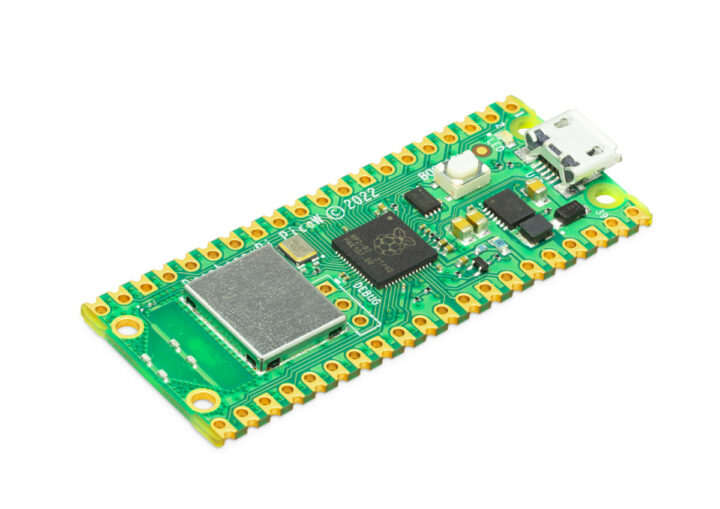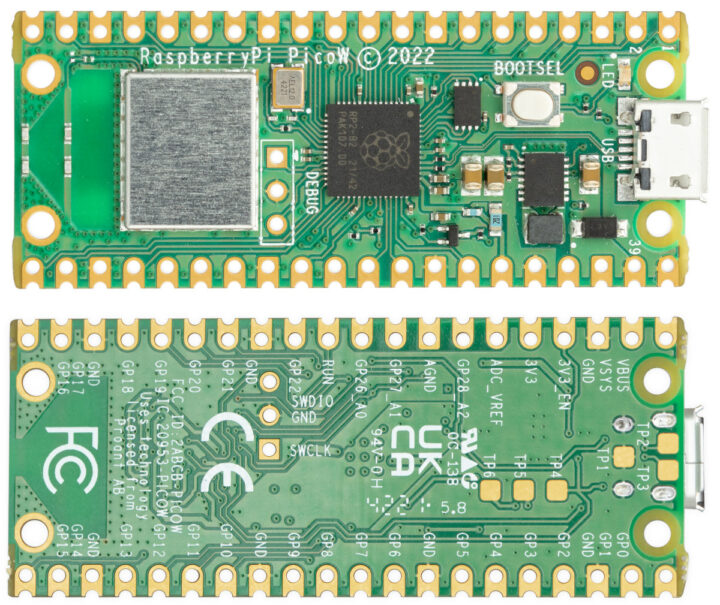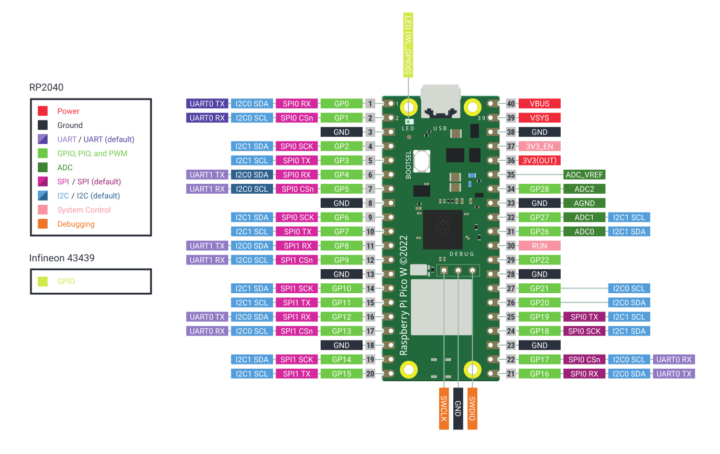I was expecting the next official Raspberry Pi board to be either an update of Raspberry Pico with WiFi and Bluetooth or with a machine learning accelerator and the new $6 Raspberry Pi Pico W delivers that wish through the addition of 2.4GHz WiFi 4.
Having said that, I was actually expecting a competitor to ESP8266 or ESP32 with a new Raspberry Pi wireless microcontroller, but it did quite happen that way as the Raspberry Pi Pico W features the same Raspberry Pi RP2040 dual-core Cortex-M0+ microcontroller found in Raspberry Pi Pico board coupled with an Infineon CYW43439 chip that’s supposed to support both 2.4 GHz WiFi 4 and Bluetooth LE 5.2. Bluetooth is not enabled right now, but may be at a later stage.
 Raspberry Pi Pico W specifications:
Raspberry Pi Pico W specifications:
- MCU – Raspberry Pi RP2040 dual-core Cortex-M0+ microcontroller @ 133 MHz with 264KB SRAM
- Storage – 2MB QSPI flash
- Connectivity – 802.11b/g/n WiFi 4 with ABRACON onboard antenna (Infineon CYW43439 connected over SPI)
- USB – 1x Micro USB 1.1 port used for power and programming
- Expansion
- 2x 20-pin 2.54mm pitch header and castellated holes with 26x GPIOs, 3x 12-bit ADC up to 500 Kbps, 2x UART, 2x I2C, 2x SPI, 16x PWM, 2 × programmable I/O (PIO) blocks with 8 state machines
- 3.3V I/O voltage
- Debugging – 3-pin Arm Serial Wire Debug (SWD) port
- Misc – BOOTSEL button, user LED (
GP25.WL_GPIO0), RTC - Power Supply – 5V via Micro USB port or 1.8 to 5.5V DC via VSYS pin
- Dimensions – 51 x 21mm
- Temperature Range – -20°C to 70°C
Apart from the addition of the WiFi module and antenna, that is basically the same design and they did not even add a reset button that would make programming quite easier… The user LED is now connected to the CYW43439 wireless chip but still controllable from the RP2040 SDK. But at least, it’s pin-to-pin compatible with the original Raspberry Pi Pico so existing add-ons or carrier boards should work without modifications.
Like the original Raspberry Pi Pic, the new board supports both C programming and MicroPython, but the Raspberry Pi Pico W comes preloaded with MicroPython. Programming is about the same, except for the additional WiFi API. For example, you can scan for available access points on the 2.4GHz band by typing:
|
1 2 3 4 |
import network wlan = network.WLAN(network.STA_IF) wlan.active(True) print(wlan.scan()) |
The CAD files, including PCB layout and schematics, designed with Cadence Allegro, a STEP 3D model. and Fritzing design have been released on the Raspberry Pi Datasheets sub-domain.
At $6, the new Raspberry Pi Pico W will make other WiFi boards based on Raspberry Pi RP2040 or Raspberry Pi Pico such as the Wio RP2040 Mini or Pimoroni Pico Wireless pack pretty much obsolete, while other boards with extra features such as Arduino Nano RP2040 Connect may still survive.
Raspberry Pi Pico W is available now as an individual unit, or in 480-unit reels for automated assembly.

Jean-Luc started CNX Software in 2010 as a part-time endeavor, before quitting his job as a software engineering manager, and starting to write daily news, and reviews full time later in 2011.
Support CNX Software! Donate via cryptocurrencies, become a Patron on Patreon, or purchase goods on Amazon or Aliexpress






